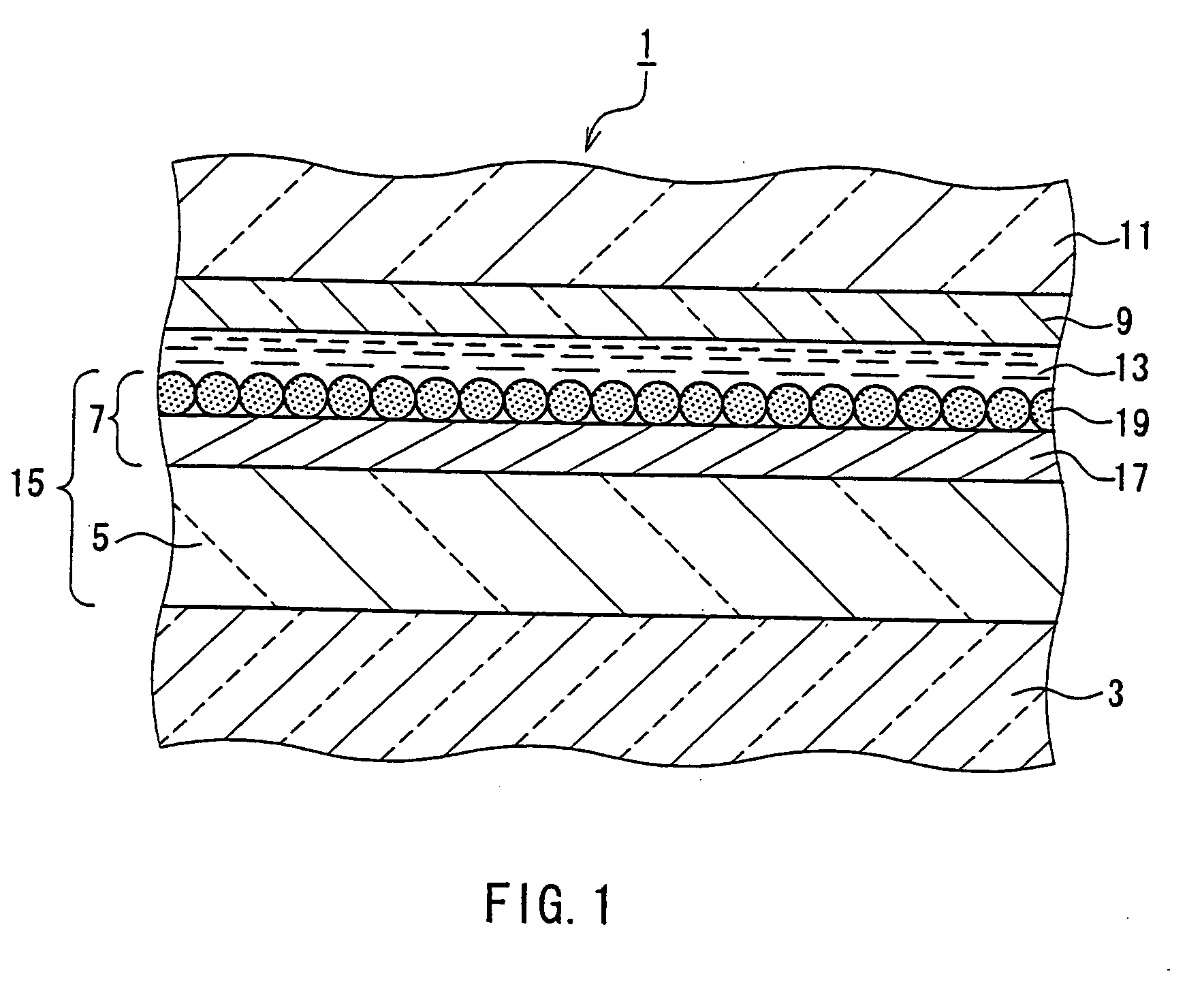Photoelectric conversion device
a conversion device and photoelectric technology, applied in light-sensitive devices, electrolytic capacitors, electrochemical generators, etc., can solve the problems of inability to absorb visible light, semiconductors can only absorb ultraviolet portions of sunlight, and the band gap is too large to efficiently absorb sunlight, so as to prevent initial degradation
- Summary
- Abstract
- Description
- Claims
- Application Information
AI Technical Summary
Benefits of technology
Problems solved by technology
Method used
Image
Examples
example 2
[0068] An electrolytic solution was obtained by dissolving 0.6 mol / dm.sup.3 of dimethylpropylimidazolium iodide, 0.1 mol / dm.sup.3 of iodine, and 0.5 mol / dm.sup.3 of N-methylbenzoimidazole in 3-methoxypropionitrile. A photoelectric transducer was produced in the same way as in Example 1, except that an electrolyte layer having the above composition was used.
example 3
[0069] An electrolytic solution was obtained by dissolving 5.times.10.sup.-5 mol / dm.sup.3 of N-methylbenzoimidazole and 0.5 mol / dm.sup.3 of iodine in a mixed solvent composed of 99% by weight of 1-methyl-3-propylimidazolium iodide and 1% by weight of water. A photoelectric transducer was produced in the same way as in Example 1, except that an electrolyte layer having the above composition was used.
example 4
[0070] An electrolytic solution was obtained by dissolving 0.6 mol / dm.sup.3 of dimethylpropylimidazolium iodide, 5.times.10.sup.-5 mol / dm.sup.3 of N-methylbenzoimidazole, and 0.1 mol / dm.sup.3 of iodine in polyethylene glycol (number-average molecular weight NW: 200). A photoelectric transducer was produced in the same way as in Example 1, except that an electrolyte layer having the above composition was used.
PUM
 Login to View More
Login to View More Abstract
Description
Claims
Application Information
 Login to View More
Login to View More - R&D
- Intellectual Property
- Life Sciences
- Materials
- Tech Scout
- Unparalleled Data Quality
- Higher Quality Content
- 60% Fewer Hallucinations
Browse by: Latest US Patents, China's latest patents, Technical Efficacy Thesaurus, Application Domain, Technology Topic, Popular Technical Reports.
© 2025 PatSnap. All rights reserved.Legal|Privacy policy|Modern Slavery Act Transparency Statement|Sitemap|About US| Contact US: help@patsnap.com



